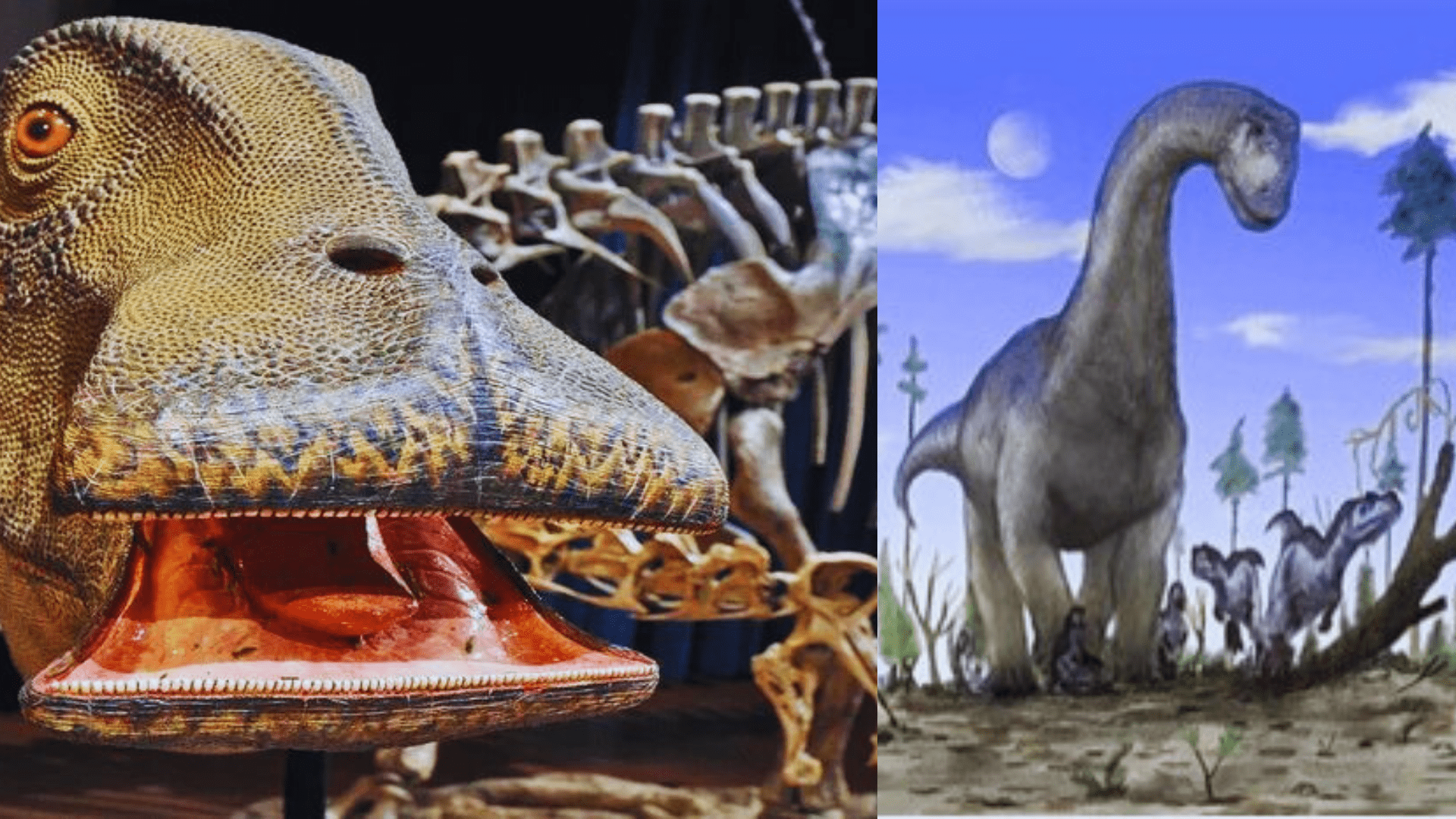The dinosaur famous for having more than 500 teeth is called Nigersaurus. Nigersaurus was a sauropod dinosaur that lived approximately 115 to 105 million years ago during the Early Cretaceous period. It is known for its unique mouth shape and an exceptionally large number of teeth. This dinosaur had a wide muzzle filled with more than 500 teeth, which were rapidly replaced every 14 days. The structure of its jaws and the sheer number of teeth suggest that Nigersaurus was adapted to feeding on soft vegetation close to the ground, earning it the nickname “Mesozoic cow”.
A Glimpse into the Past
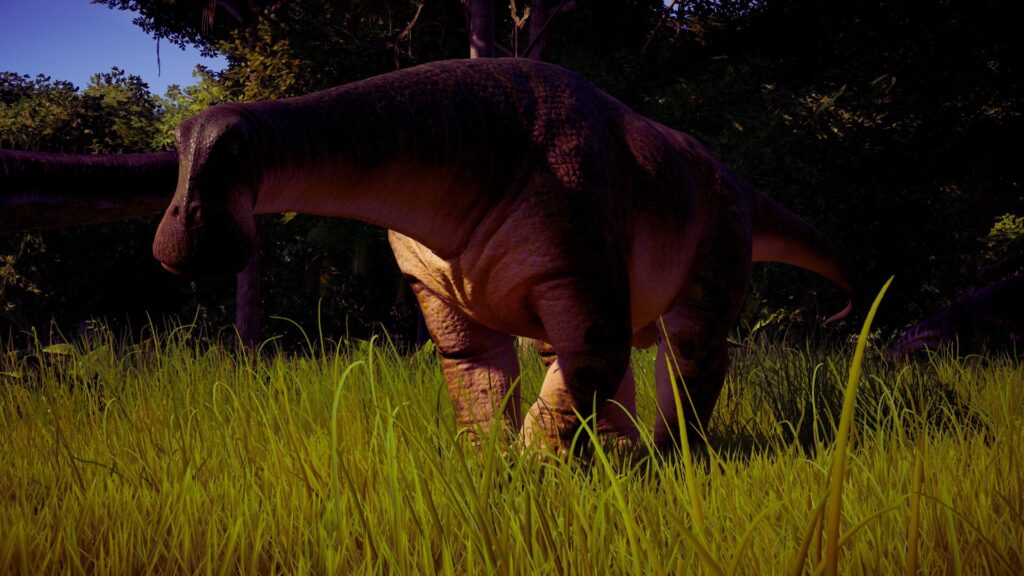
Nigersaurus, a 30-foot-long plant-eating dinosaur, thrived 110 million years ago in the lush environments of what is now Niger’s Sahara Desert. This remarkable dinosaur is known for its unique mouth filled with more than 500 teeth, adapted for grazing on the dense vegetation of its habitat. At the time Nigersaurus lived, the region was a vibrant floodplain, characterized by wide rivers and conifer forests, a stark contrast to the desert landscape seen today. The initial fossils of Nigersaurus were discovered approximately 50 years ago within the Erlhaz Formation in Niger’s Ténéré Desert, illustrating the extensive history and evolution of the Earth’s surface and climate. This discovery underscores the dynamic changes our planet has undergone, from lush floodplains to arid deserts, and provides a window into the life of one of the most fascinating dinosaurs to have roamed the Earth.
The Nigersaurus: An Overview
Nigersaurus is a fascinating genus of rebbachisaurid sauropod dinosaur that lived approximately 115 to 105 million years ago during the middle Cretaceous period. Known for its distinctive features, the Nigersaurus had a delicate skull and an astonishing battery of more than 500 replaceable teeth, making it a subject of significant interest among paleontologists. This dinosaur was a herbivore, residing in the areas now known as Niger in Africa, where its fossils have been discovered.
The name “Nigersaurus,” meaning “Niger reptile,” reflects its geographical discovery location. Its physical build was similar to that of the Diplodocus, another well-known sauropod dinosaur. The Nigersaurus stands out not only for its extensive dental structure but also for being one of the first dinosaurs to undergo a CT scan, offering in-depth insights into its anatomy and feeding habits.
Discovery and Naming
The Nigersaurus, meaning “Niger’s Lizard,” was named after the country of Niger, where its fossils were discovered. This unique naming honors the location of its discovery in West Africa. The dinosaur was first identified during expeditions led by French paleontologist Philippe Taquet and later extensively studied by American paleontologist Paul Sereno, who also contributed to naming the species. On their first day of exploration, Sereno and his team discovered bones of the long-necked dinosaur Nigersaurus, leading to further research and the eventual naming of the species after its discovery site and in recognition of Taquet’s earlier work on the dinosaur.
Physical Characteristics
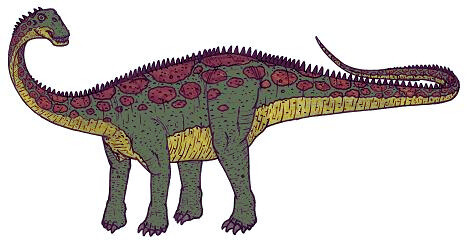
Nigersaurus was a distinctive sauropod dinosaur known for several unique physical characteristics. It had a delicate skull with a wide mouth lined with more than 500 replaceable teeth, designed for grazing on soft vegetation. This dinosaur was an herbivore, primarily feeding on ferns, angiosperms, and shrubs, adapted to its diet with a weak jaw suitable for soft vegetation. Nigersaurus was a quadruped, featuring a small head, thick hind legs, and a prominent tail, common traits among sauropods. However, it was relatively unique within its clade due to its vast mouth and many teeth, which set it apart from other sauropod dinosaurs.
Diet and Habitat
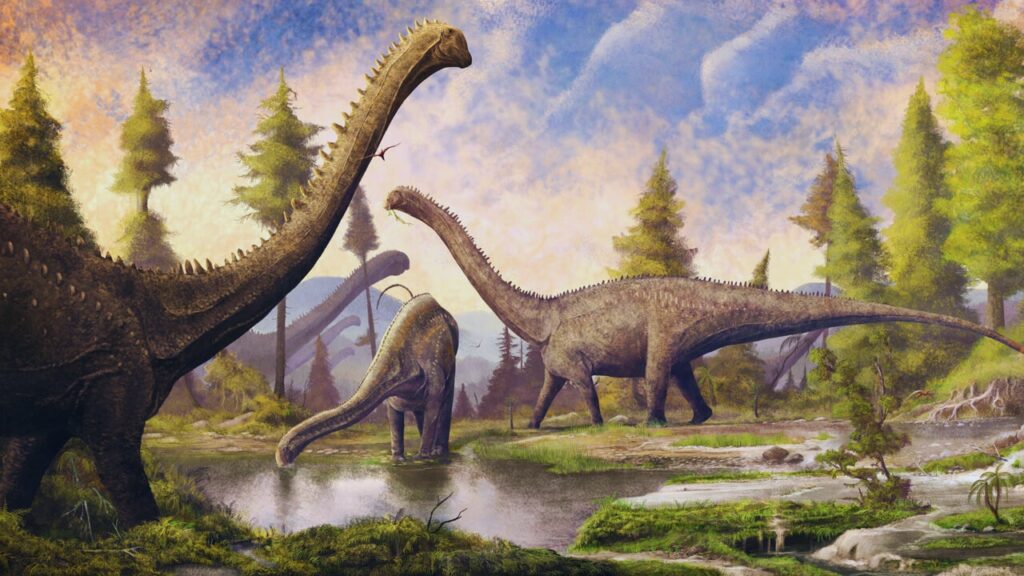
The Nigersaurus, a 30-foot-long sauropod dinosaur, inhabited riparian zones, and areas near rivers, suggesting a habitat rich in lush vegetation. Its diet was predominantly composed of soft plants, including ferns, horsetails, and angiosperms (flowering plants). This dietary preference is supported by its specialized mouth and teeth structure, designed to efficiently harvest these types of plants. Living during the Cretaceous period, the Nigersaurus’s environment would have been a mix of riverside forests and wetlands, providing ample food sources for this herbivorous dinosaur.
The Significance of Its 500 Teeth
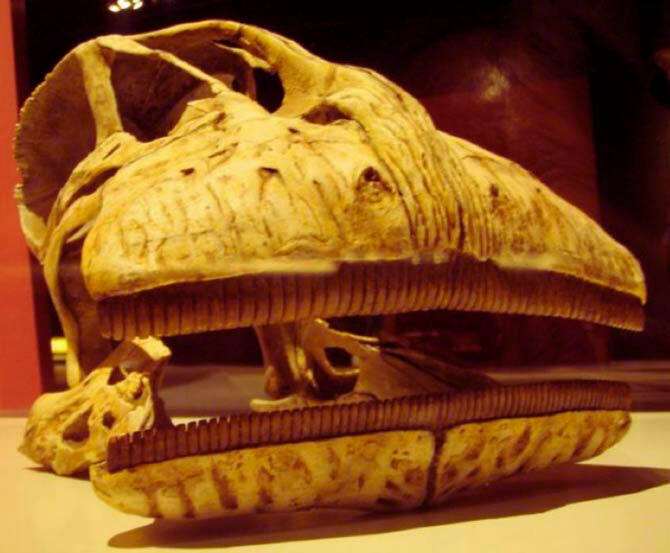
The Nigersaurus, notable for its 500 replaceable teeth, represents a unique adaptation among dinosaurs, particularly sauropods. This extensive dental array, with 60 columns of needle-shaped upper teeth and at least 68 sharp lower teeth, was perfectly suited for its diet and feeding habits. The design of its mouth and the sheer number of teeth facilitated efficient grazing on soft vegetation, such as ferns and angiosperms. This allowed the Nigersaurus to feed more effectively than other herbivorous dinosaurs, with its broad, straight-edged muzzle acting like a biological lawnmower, quickly clipping vegetation at ground level. This feeding strategy is akin to modern-day grazing animals, earning it the nickname “Mesozoic cow”.
How the Nigersaurus Ate
Nigersaurus, a unique sauropod dinosaur, showcased extreme adaptations for herbivory, primarily at ground level. Its feeding behavior is inferred from the shape of its snout and the pattern of wear on its teeth, which suggest a diet consisting mainly of soft vegetation. Studies, including CT scans of the skull, have led researchers to conclude that Nigersaurus grazed low to the ground, with a mouth adapted to scoop up vegetation, much like a modern-day lawnmower. This is further supported by patterns consistent with eating soft plants, as the dental wear patterns do not indicate the consumption of abrasive materials like wood or hard seeds. Sereno and colleagues proposed that Nigersaurus’s feeding posture was primarily downwards, focused on ferns, angiosperms, and other ground-level vegetation, reinforcing its nickname as the “Mesozoic cow” due to its grazing habits.
Comparison with Other Dinosaurs
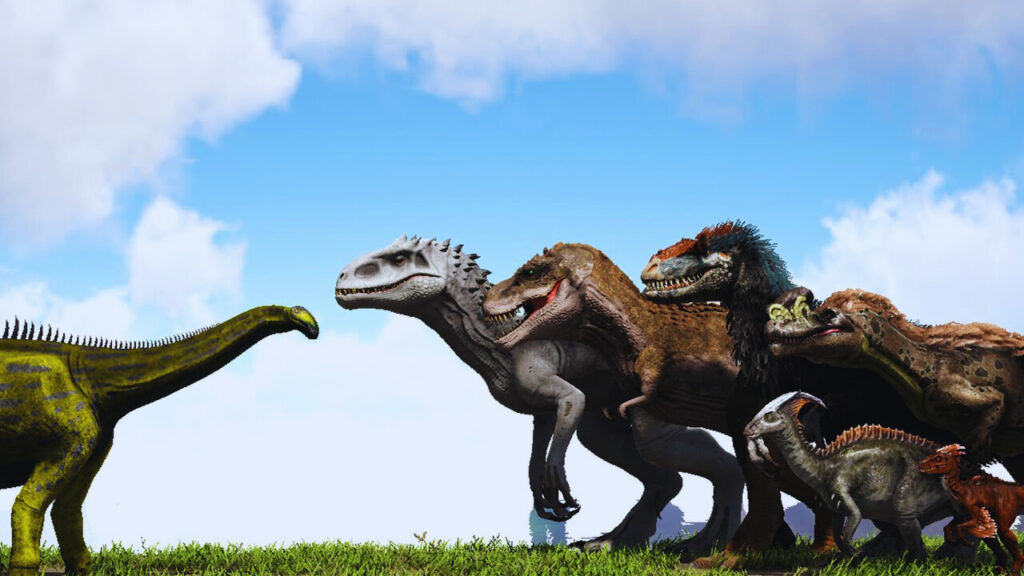
Comparing Spinosaurus and Nigersaurus requires considering their distinct ecological niches and physical adaptations. Spinosaurus is known for its large sail-like structure on its back and is thought to have been semiaquatic, hunting both on land and in water. It lived during the late Cretaceous period and was one of the largest carnivorous dinosaurs. On the other hand, Nigersaurus, living during the middle Cretaceous period, was a herbivorous sauropod characterized by its unique, vacuum-like mouth adapted for grazing close to the ground, earning it the nickname “Mesozoic Cow”. Their differences in diet, habitat preferences, and physical characteristics indicate that they occupied different ecological roles. While Spinosaurus might have been at the top of the food chain in its environment, preying on fish and possibly other dinosaurs, Nigersaurus was a specialized feeder, consuming low-growing vegetation. This comparison highlights the diverse adaptations dinosaurs developed to thrive in their respective environments.
The Nigersaurus in Popular Culture
Nigersaurus, a dinosaur known for its distinctive feeding habits and appearance, has made notable appearances in popular culture, particularly in documentaries focused on prehistoric life. It was featured in the National Geographic documentary “Bizarre Dinosaurs,” where various unique dinosaurs were showcased, highlighting their odd characteristics and behaviors. The documentary aimed to provide viewers with insights into lesser-known dinosaurs, with Nigersaurus standing out due to its unusual mouth structure and feeding habits. Additionally, Nigersaurus appeared in “When Crocs Ate Dinosaurs,” another documentary that explores the prehistoric world, focusing on the interaction between different species, including dinosaurs and crocodiles. These appearances help to increase public awareness and knowledge about Nigersaurus, showcasing its place among the diverse array of dinosaurs that once roamed the Earth.
Debunking Myths
One myth surrounding dinosaurs, like the Nigersaurus, stems from their portrayal in popular media, which often emphasizes more dramatic aspects at the expense of accuracy. For instance, misconceptions about the Nigersaurus’ appearance or behavior might be influenced by such portrayals. To clarify:
- Pronunciation and Name: The name “Nigersaurus” is sometimes mistakenly associated with racial connotations. However, it’s named after the country Niger, where its fossils were found, and is pronounced “Nee-ZHAIR-saurus,” emphasizing its scientific and geographic roots rather than any racial implication.
- Diet and Feeding Habits: Another common myth might concern its diet. Nigersaurus was a herbivore with a unique wide muzzle, adapted for grazing on low-lying vegetation, not the fearsome predator some might imagine based on the general reputation of dinosaurs.
- Representation in Media: Lastly, films and media often exaggerate dinosaurs’ characteristics for entertainment. While entertaining, these representations can lead to misconceptions about their actual appearance and behavior, underscoring the importance of scientific accuracy in educational content.
The Misconceptions Around Its Name
The name “Nigersaurus” sometimes sparks misconceptions due to its phonetic similarity to sensitive racial terminology. However, this name has a purely scientific and geographical origin. It is derived from the country Niger, where its fossils were first discovered. The correct pronunciation is “Nee-ZHAIR-saurus,” which emphasizes its connection to the discovery site rather than any inappropriate connotations. This distinction is crucial for educational purposes and in discussions to avoid misunderstandings and ensure respect in scientific communication.
Nigersaurus vs. T-Rex: A Popular Confusion
Nigersaurus and Tyrannosaurus rex (T-Rex) are two distinct dinosaurs that lived during different periods and had different diets and habitats. Nigersaurus, a sauropod, existed in the middle Cretaceous period, around 115 to 105 million years ago, and was a herbivore with a wide muzzle for grazing close to the ground. T-Rex, a theropod, lived later during the upper Cretaceous period, around 68 to 66 million years ago, and was a carnivore known for being one of the largest land predators. They belonged to different families and had significantly different lifestyles; Nigersaurus was a plant-eater with a delicate skull and an array of teeth suited for feeding on low-lying vegetation, while T-Rex was a formidable predator with massive jaws and sharp teeth designed for tearing flesh.
Despite their differences, popular media sometimes pit these dinosaurs against each other, such as in video games and YouTube videos. However, these scenarios are purely speculative and for entertainment, as these dinosaurs never coexisted and had vastly different ecological roles.
The Role of Fossils in Understanding Dinosaurs
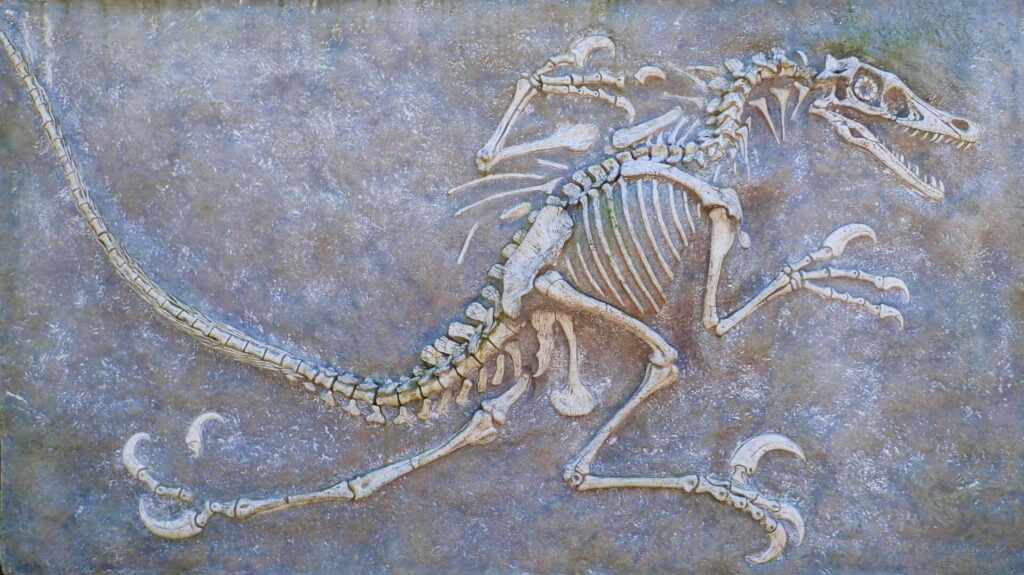
Fossils are integral to understanding dinosaurs, offering insights into their evolution, behavior, and environments. They serve as the primary evidence for the existence of dinosaurs, revealing how life, landscapes, and climate have changed over millions of years. The fossil record, consisting of bones, teeth, and trace fossils like footprints or burrows, provides snapshots of the past, illustrating evolutionary change. Dinosaur trace fossils, specifically, record the activities of living dinosaurs, most commonly through footprints, offering clues about their behavior and movement. Studying these fossils allows scientists to infer modes of locomotion, social behavior, and even aspects of their environment, like the climate and prevailing vegetation. Through paleontology, the study of fossils, we gain a comprehensive understanding of the history of life on Earth.
Conclusion
The Nigersaurus, with its 500 teeth, offers a captivating glimpse into the diversity and complexity of dinosaur life. Its existence challenges our perceptions and broadens our understanding of the natural world. As we continue to explore and learn, let’s remember the Nigersaurus as a testament to the wonders that once roamed our planet.
Read also: How Tall is Justin Bieber?
